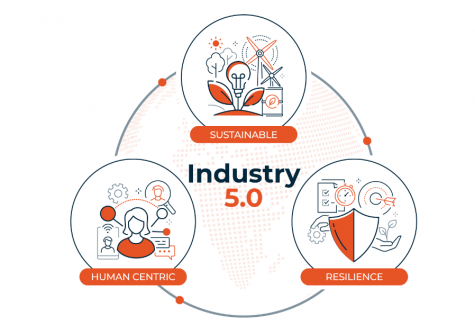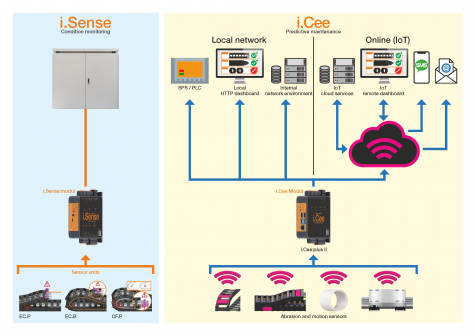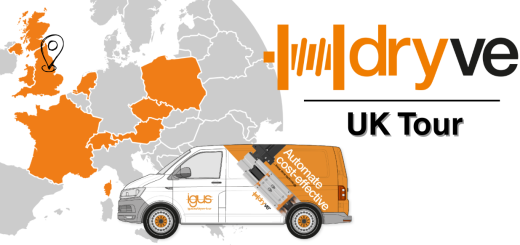What is industry 5.0?
Industry 5.0 is the beginning of a new phase of industrialisation that encourages a human-centric approach to working with automation. Where industry 4.0 focused on automation and efficiency, industry 5.0 combines critical thinking and creativity from humans with the impressive capabilities of machines.
What does this mean?

Combining human and robotic skills moves away from being entirely dependent on machines and progresses into a space where collaboration is prioritised. By implementing the concept of a shared workload for humans and machines, this approach aims to produce a more balanced and sustainable industrial environment that works towards benefiting society as a whole.
Adapting to industry 5.0 shouldn’t require a major change from previous industry 4.0 practices, requiring more of a shift in mindset than major alterations to operations. By fostering a culture that values teamwork and understands the benefits of automation, employees can adapt to new technologies and develop the skills they need to work alongside it.
Ensuring business practices are environmentally sound is becoming increasingly important so developing a sustainability strategy to go alongside industry 5.0 changes. At its core, industry 5.0 really is just a lean version of industry 4.0 that puts stricter focus on creating the right balance between people and technology in industry.
What does industry 5.0 mean for manufacturers?
The implementation of industry 5.0 will have a number of outcomes:
An increase in manufacturers’ ability to customise products to specific requirements which will encourage customer satisfaction and loyalty.
Through promoting sustainable practices, companies are encouraged to get on board with green initiatives, dedicating time and resources to goals such as carbon neutrality and waste reduction.
Integrating Artificial Intelligence (AI) and other advanced technologies not only provides a competitive edge but allows innovation to take centre stage with new products, services and ideas being created.
For industry 5.0 to be successful in any business, employees need to be well-informed and have access to the training that will help them to adjust to new processes. Without the desire to move forward and develop ideas, industry 5.0 cannot be effective. Studying of companies that have successfully implemented industry 5.0 can help simplify the transition, allowing manufacturers to benefit from enhanced productivity and efficiency as a result of heightened morale amongst employees who feel valued and well-informed throughout these changes.
How does it impact igus®- Are we prepared?
As a motion plastics manufacturer, igus® can reap the benefits of industry 5.0 practices just as we did with industry 4.0. We foster a culture that values change and the introduction of useful new technologies so the transition to industry 5.0 should be smooth.

At igus® we already manufacture products that demonstrate the key elements of industry 5.0. Our motion plastics components such as energy chain systems, high performance plastic bearings and chainflex cables can be equipped with connectivity and sensors to ensure complex automation solutions are compatible with industry 5.0.
This is a working example that employees can work alongside predictive maintenance and condition monitoring to make the process of performing maintenance easier. Digitisation concepts are the next step in upgrading automated solutions and we offer two ways of doing so:
- Condition monitoring – A smart network of condition monitoring systems provides the foundation for predictive maintenance. Here at igus® i.Cee is the umbrella term for predictive maintenance whereas i.Sense encompasses all condition monitoring systems.
- Predictive maintenance– Uses sensors, software, and elements of condition monitoring to provide a system where dynamic service life calculation determines the optimal maintenance time for igus® products. Available in a wide variety of designs, i.Cee caters to customer’s individual requirements



